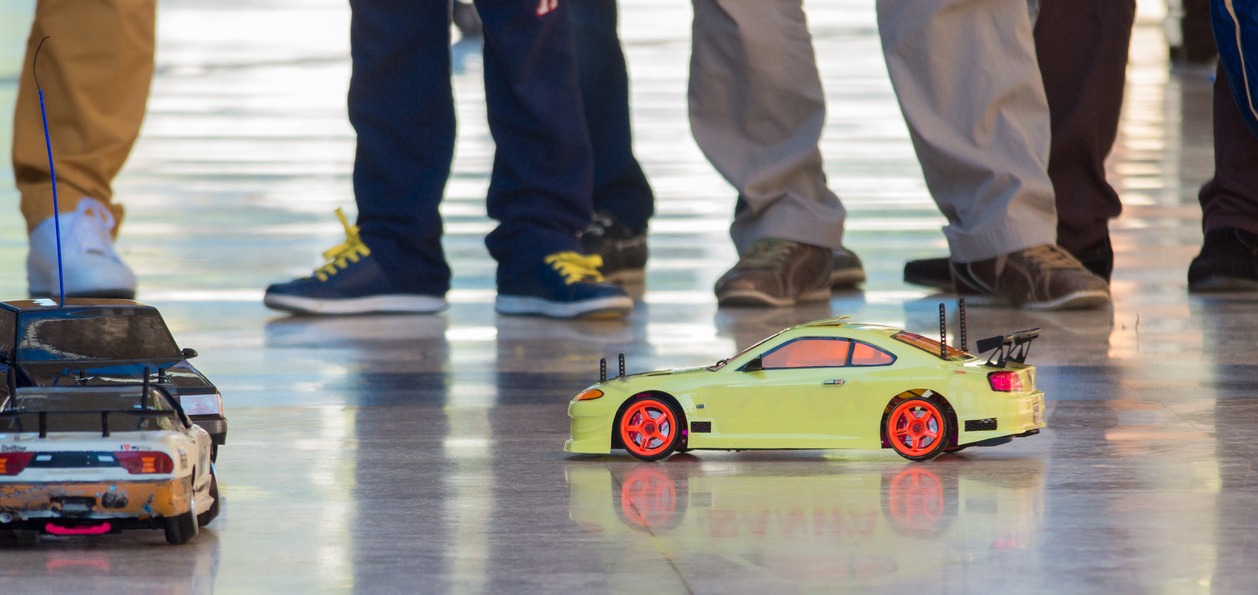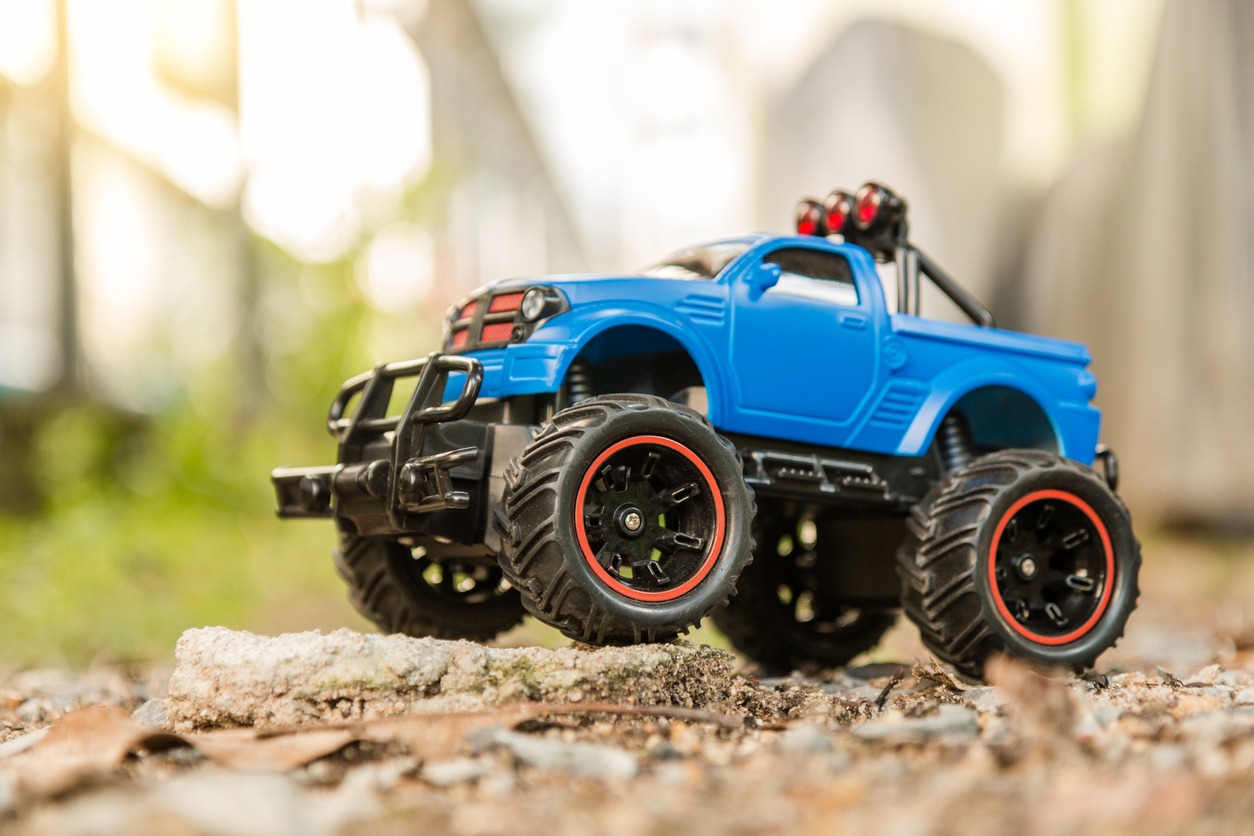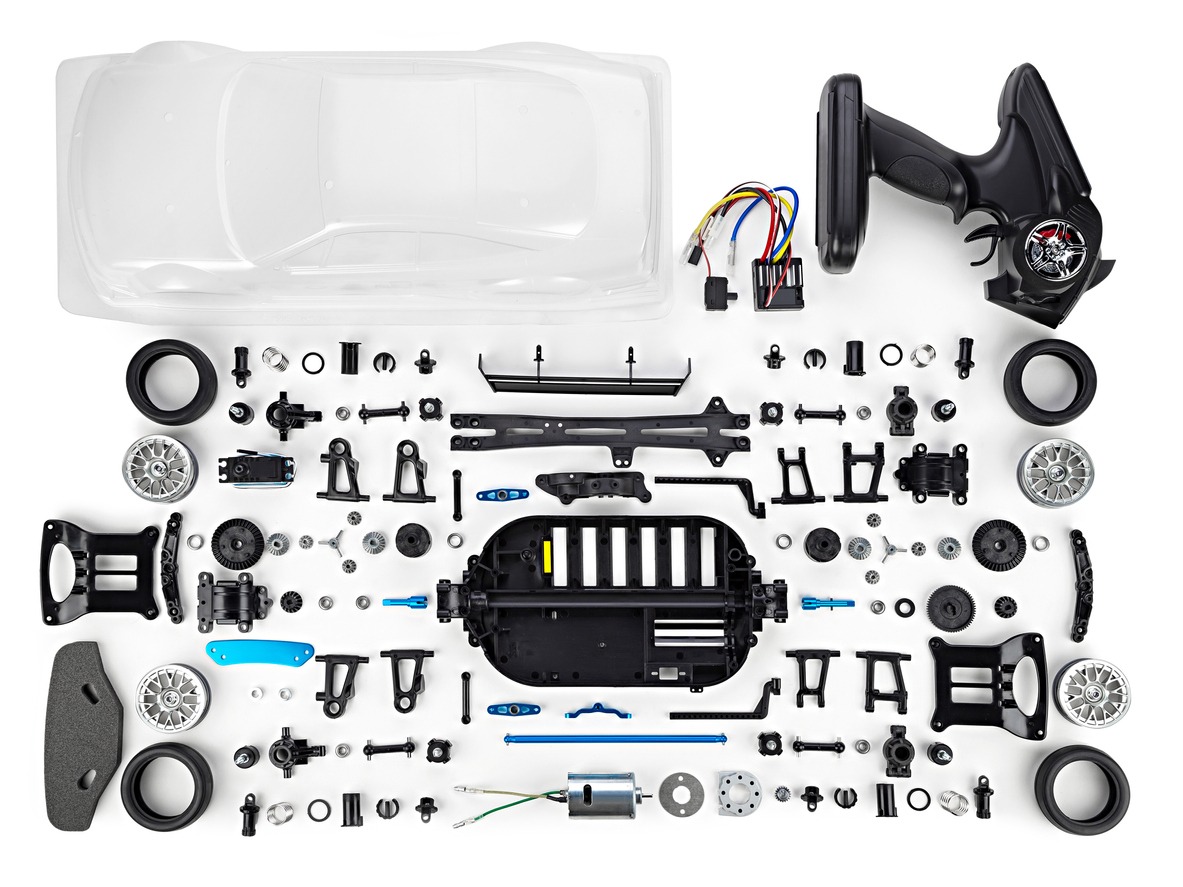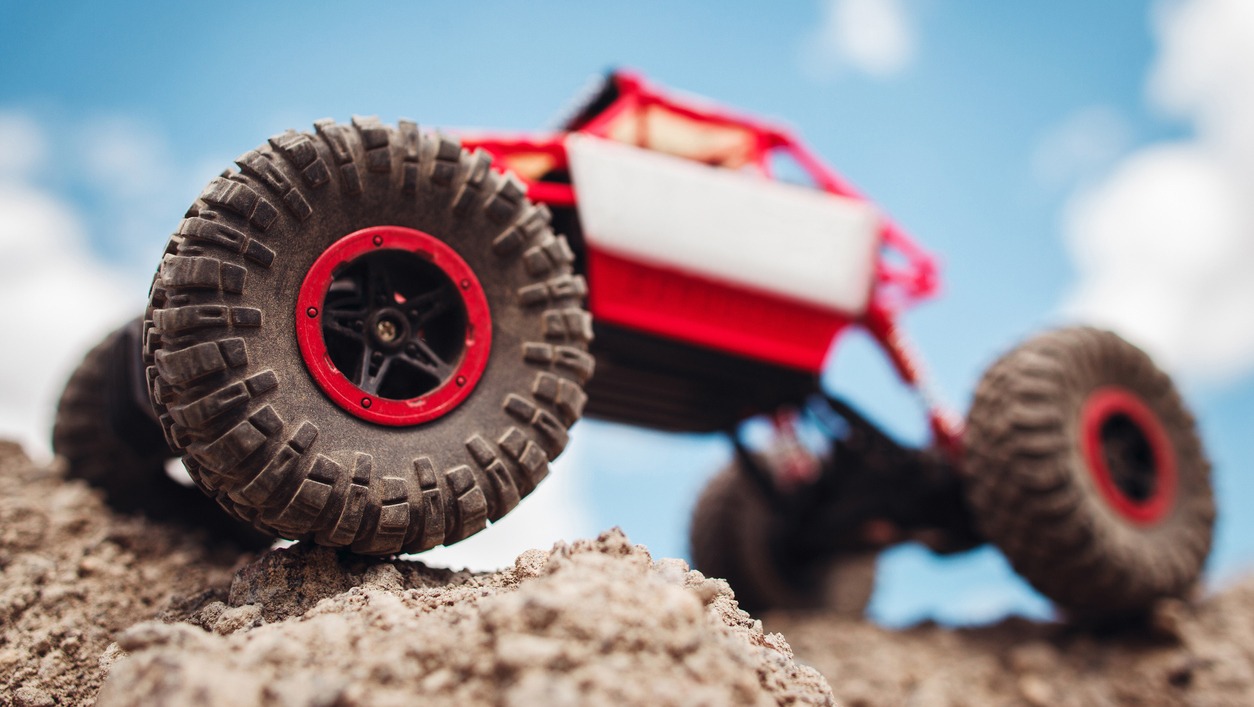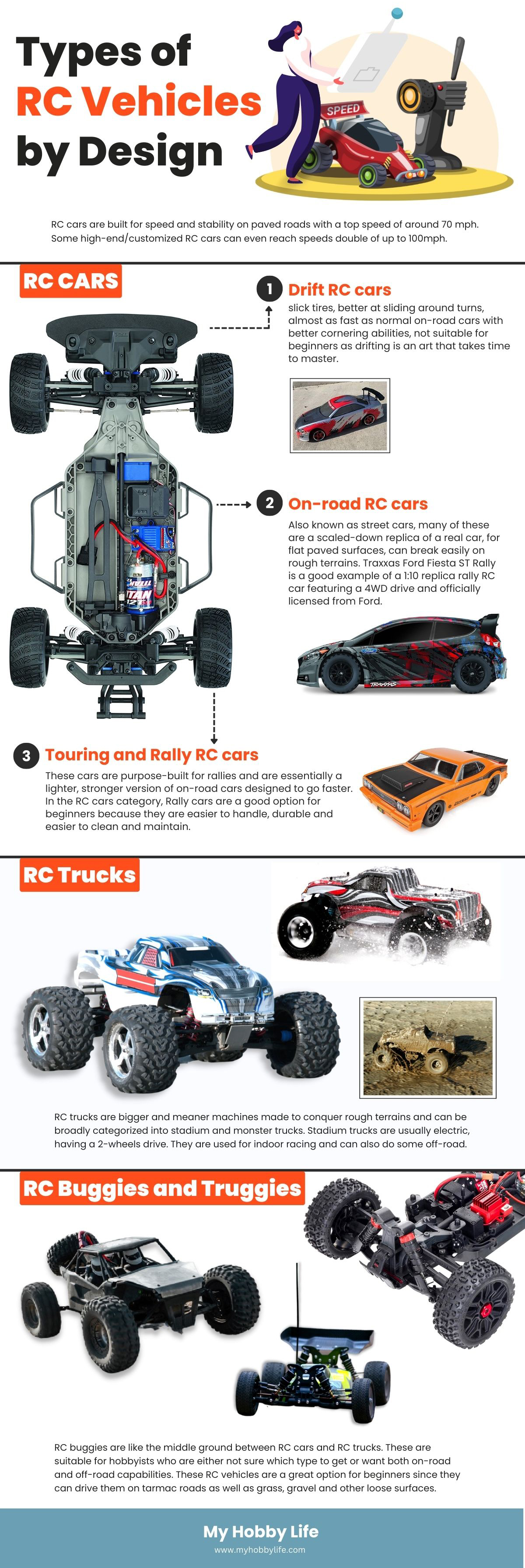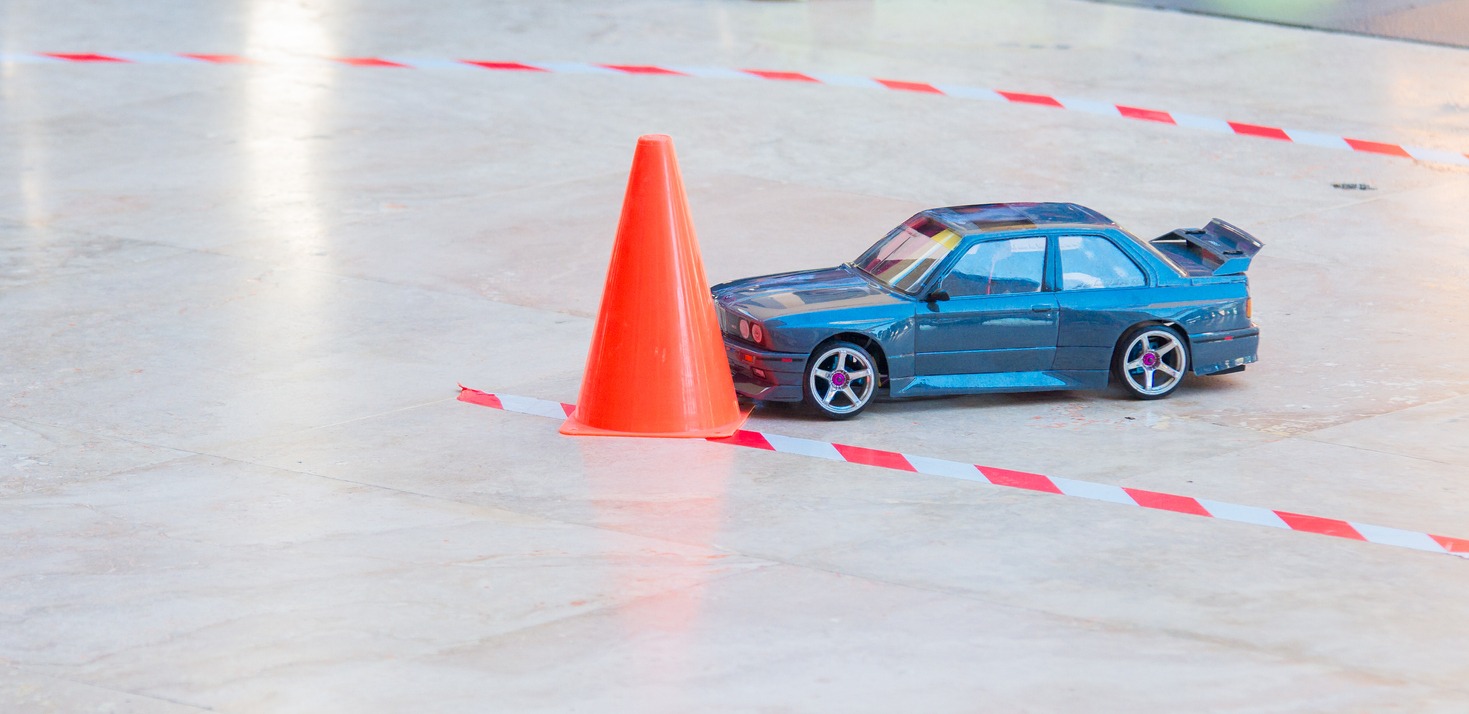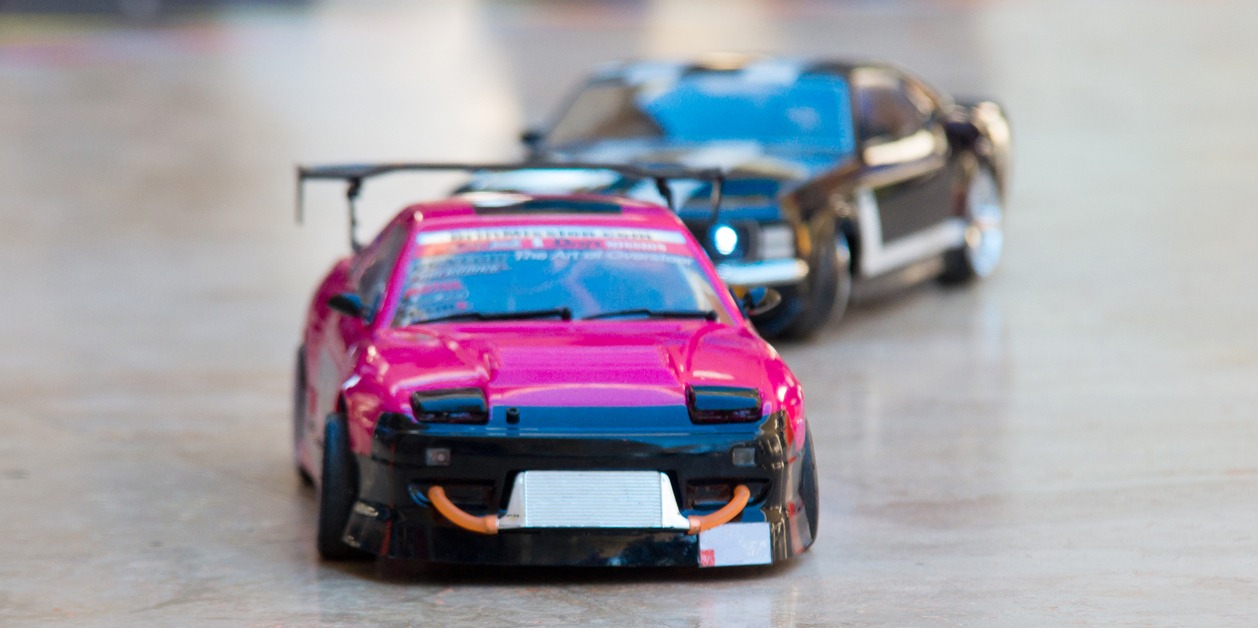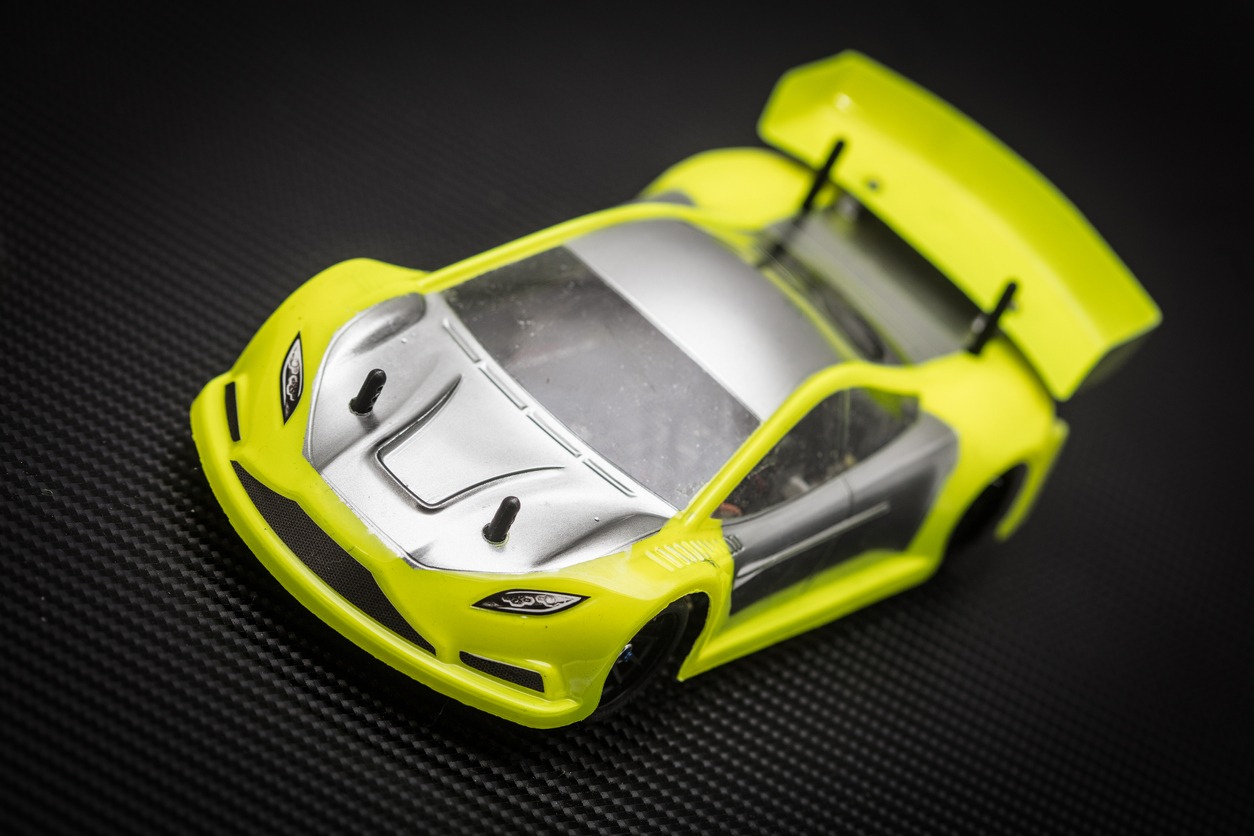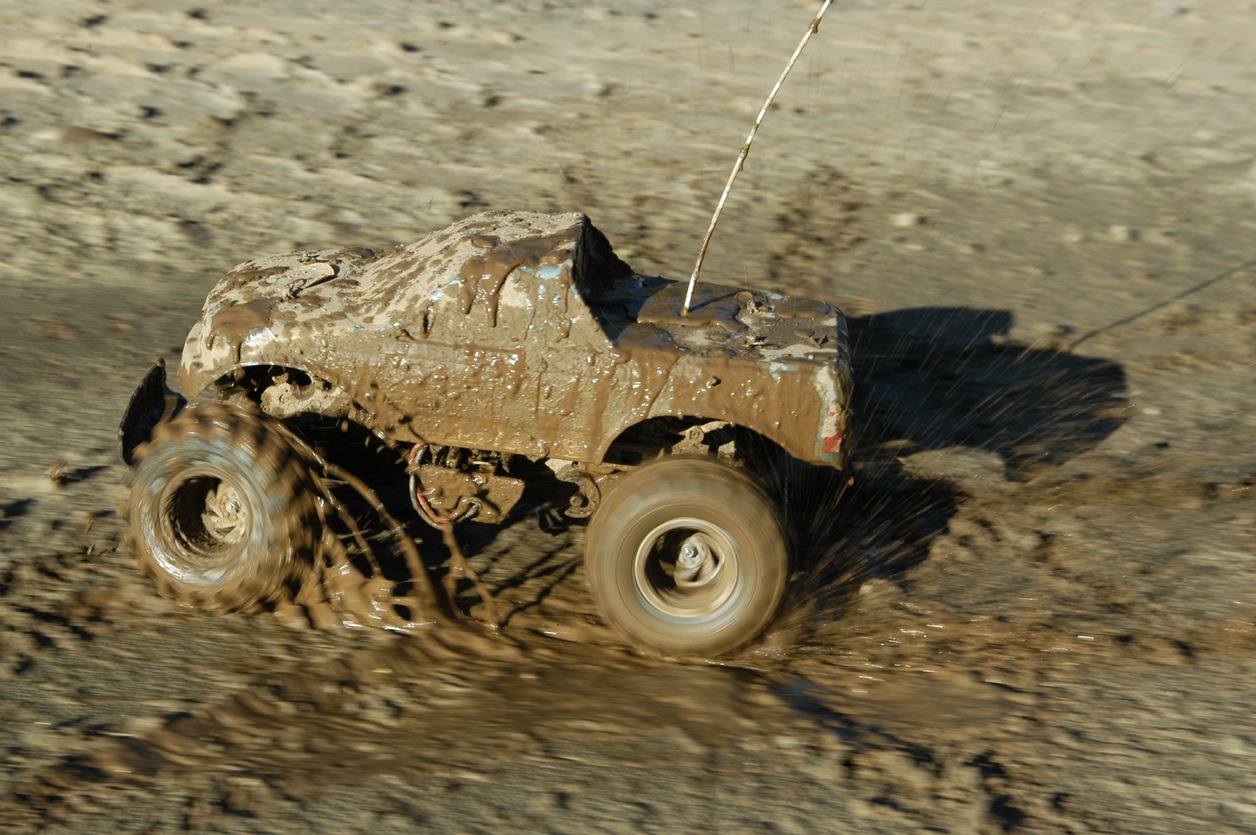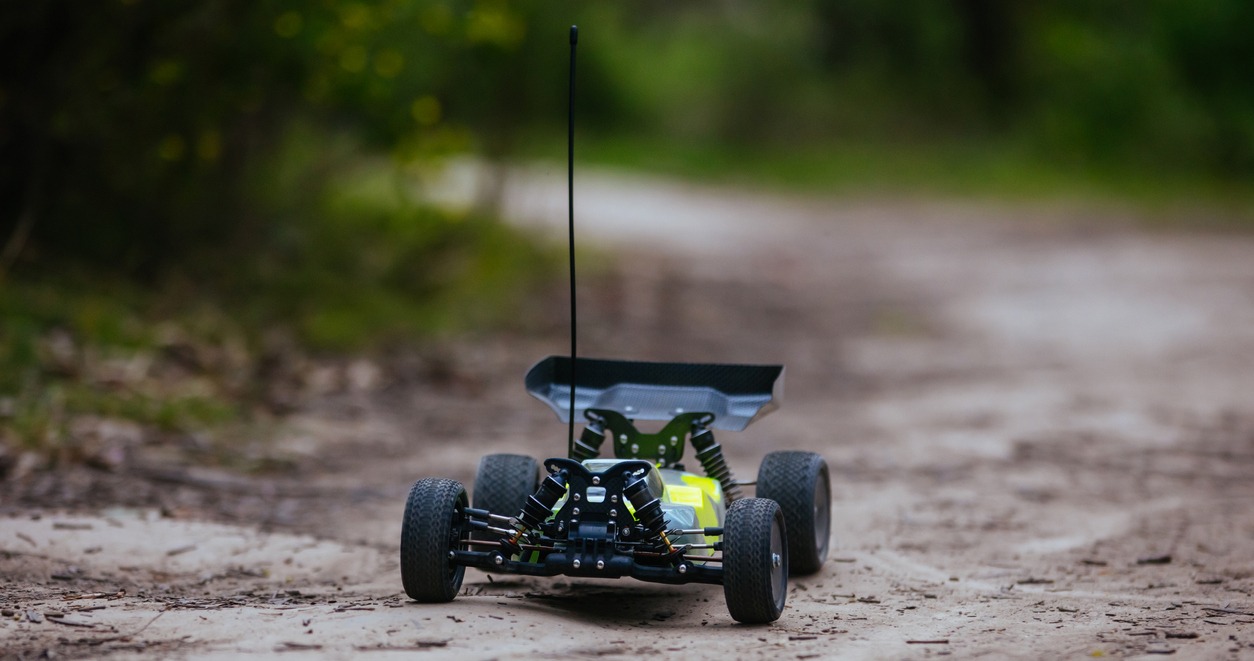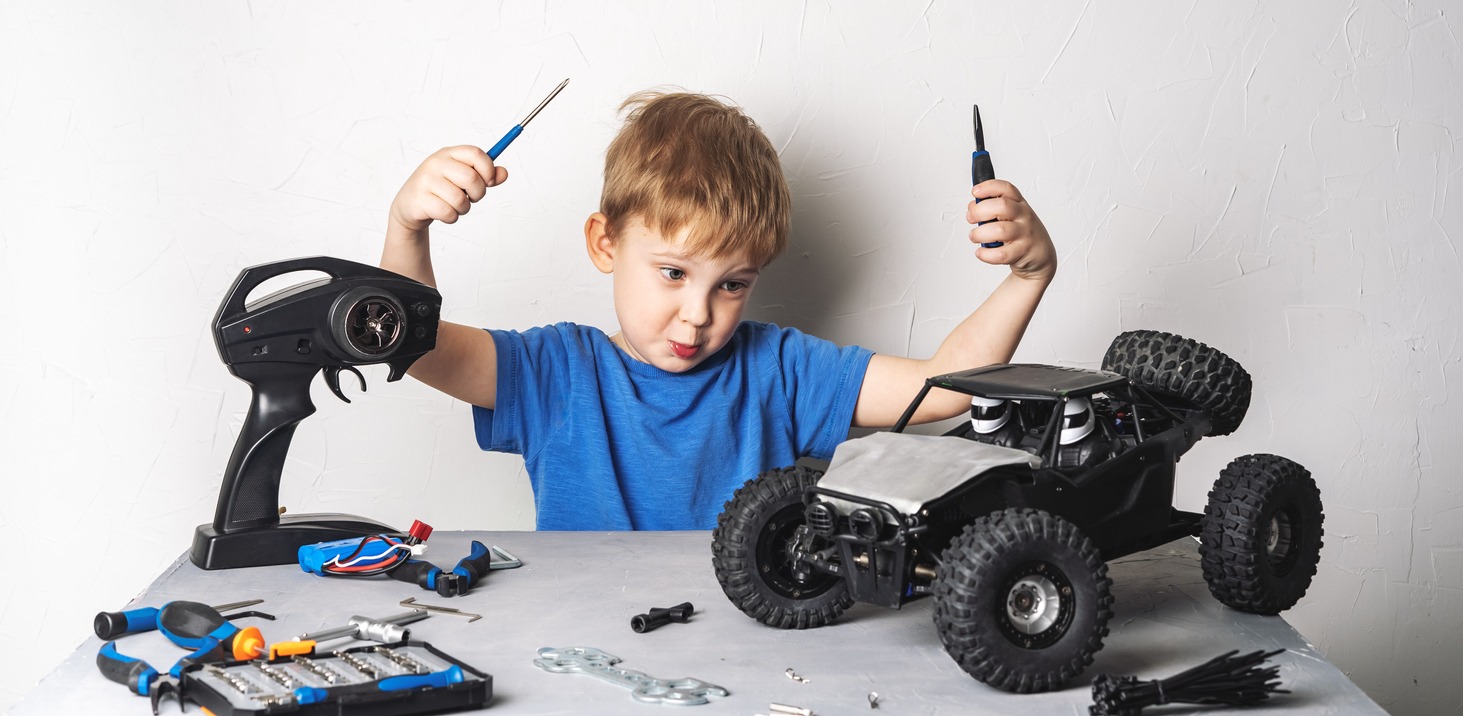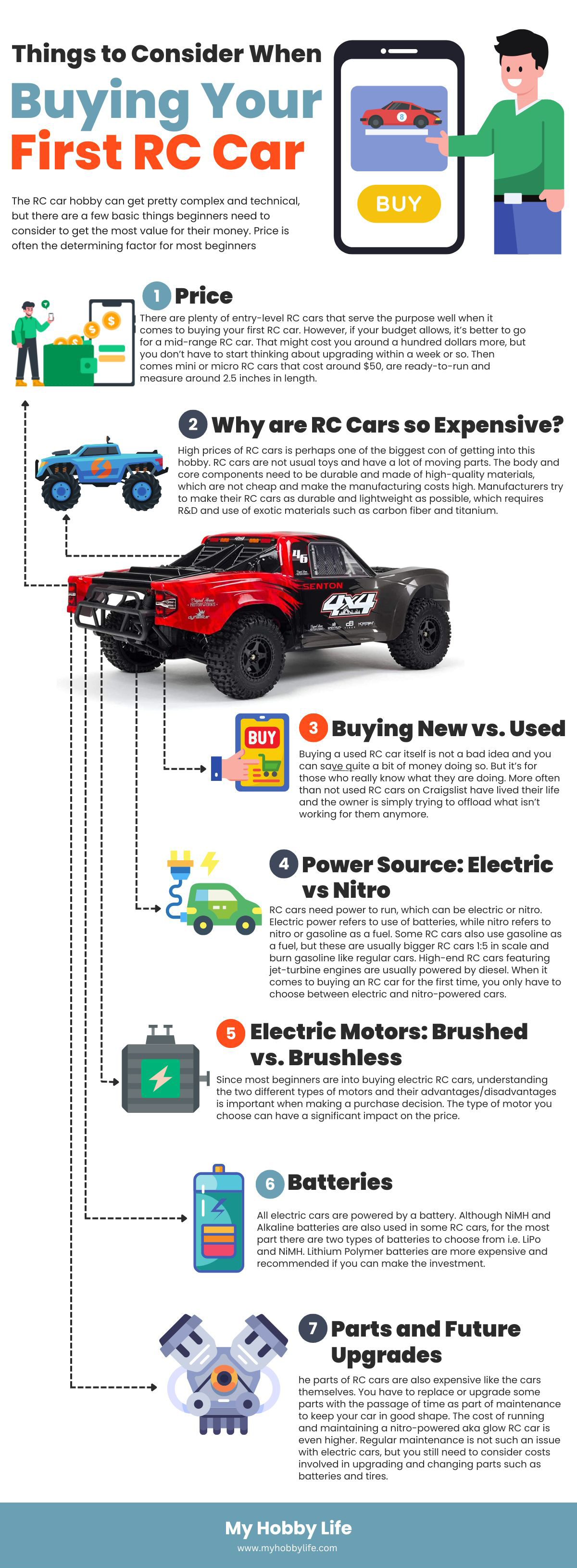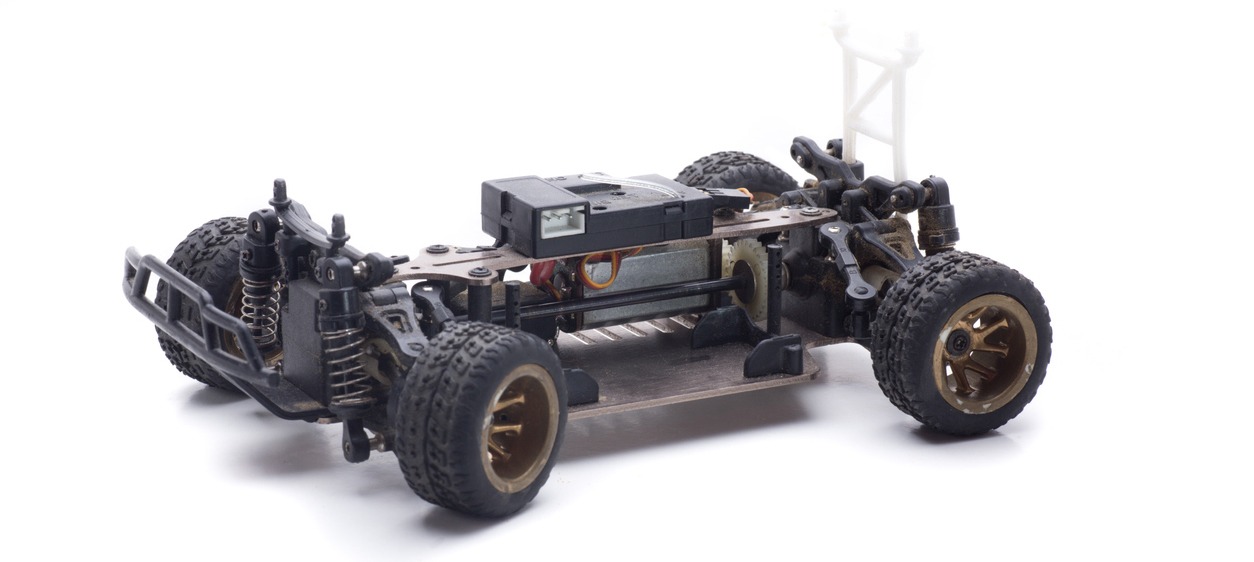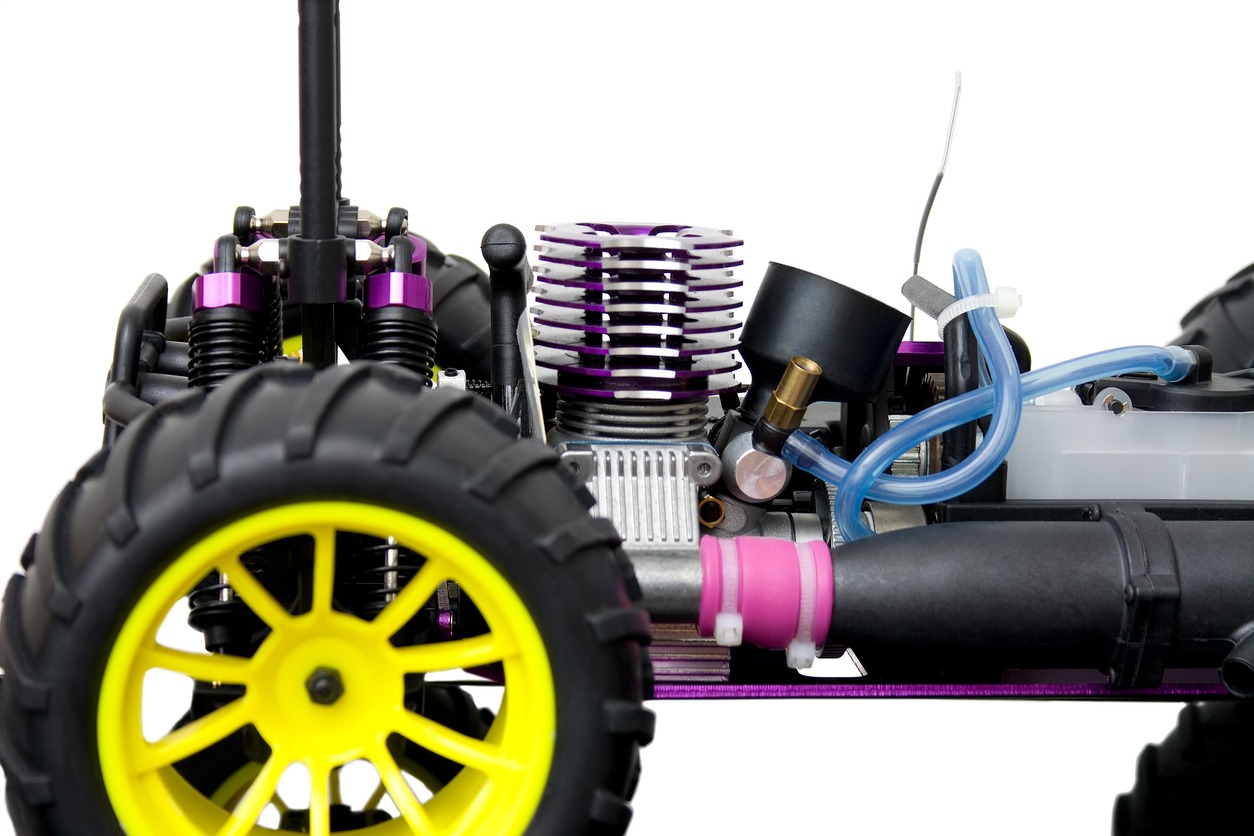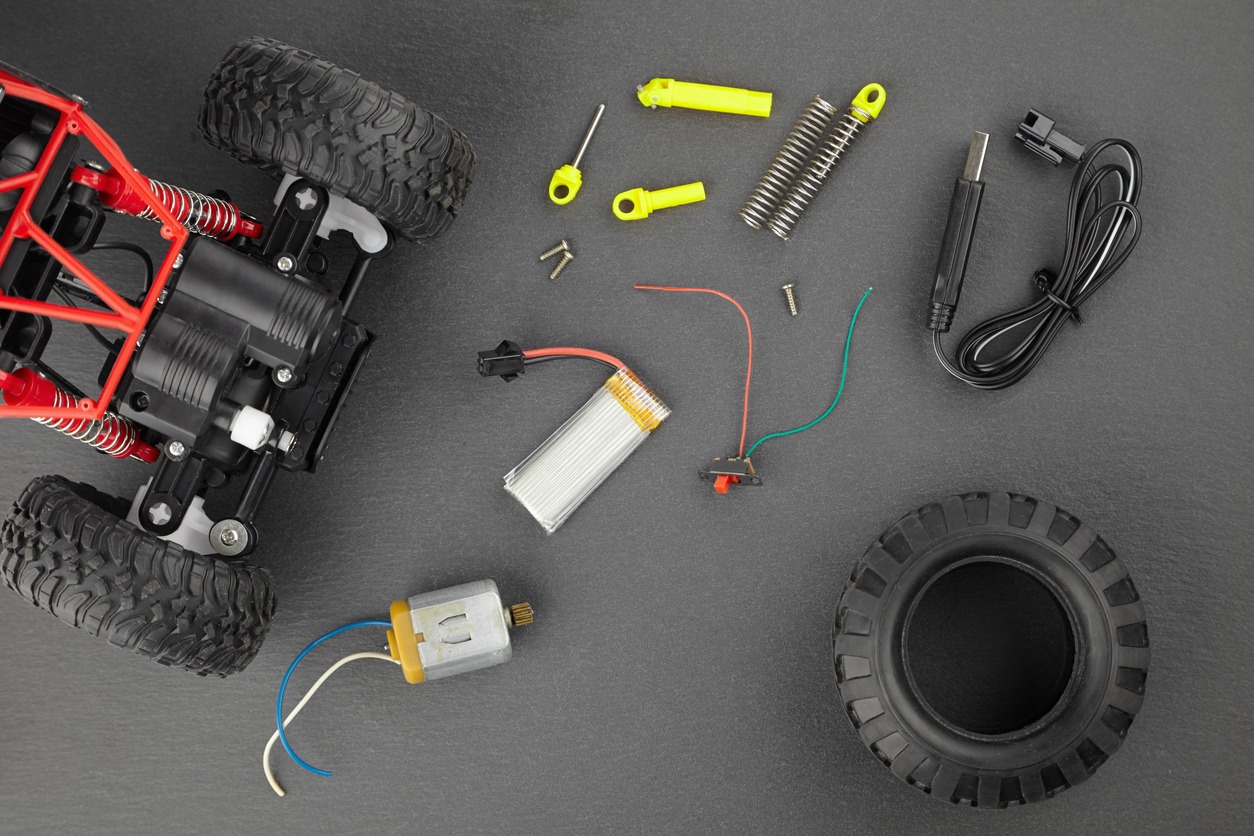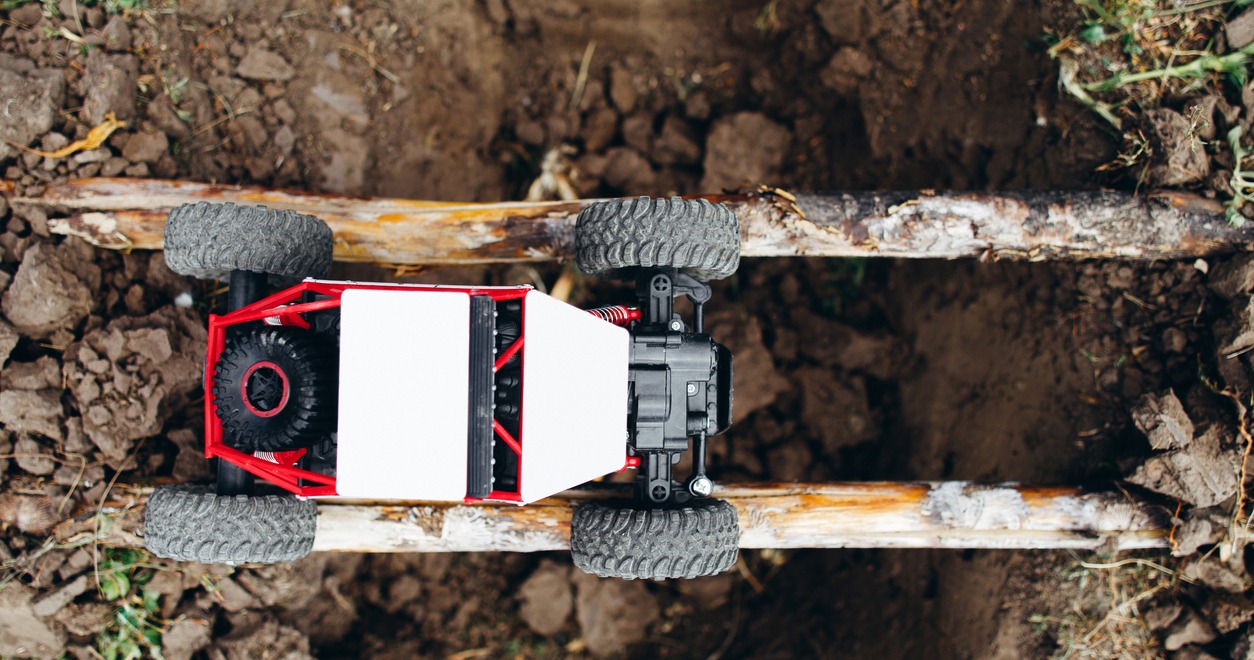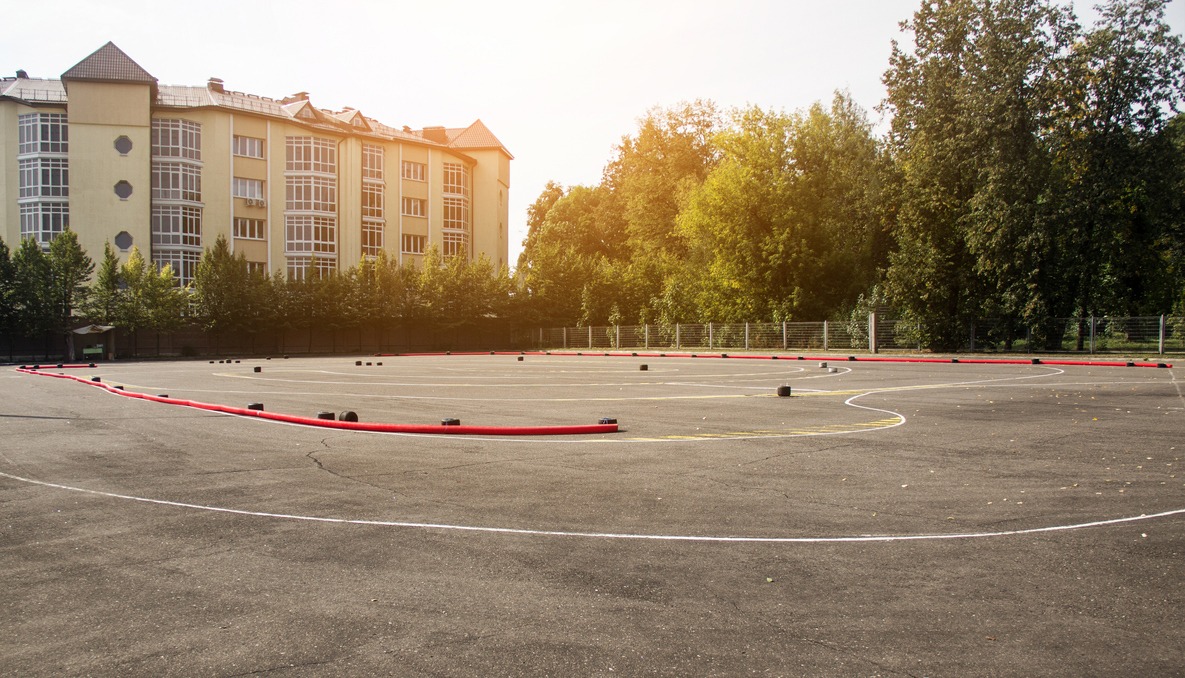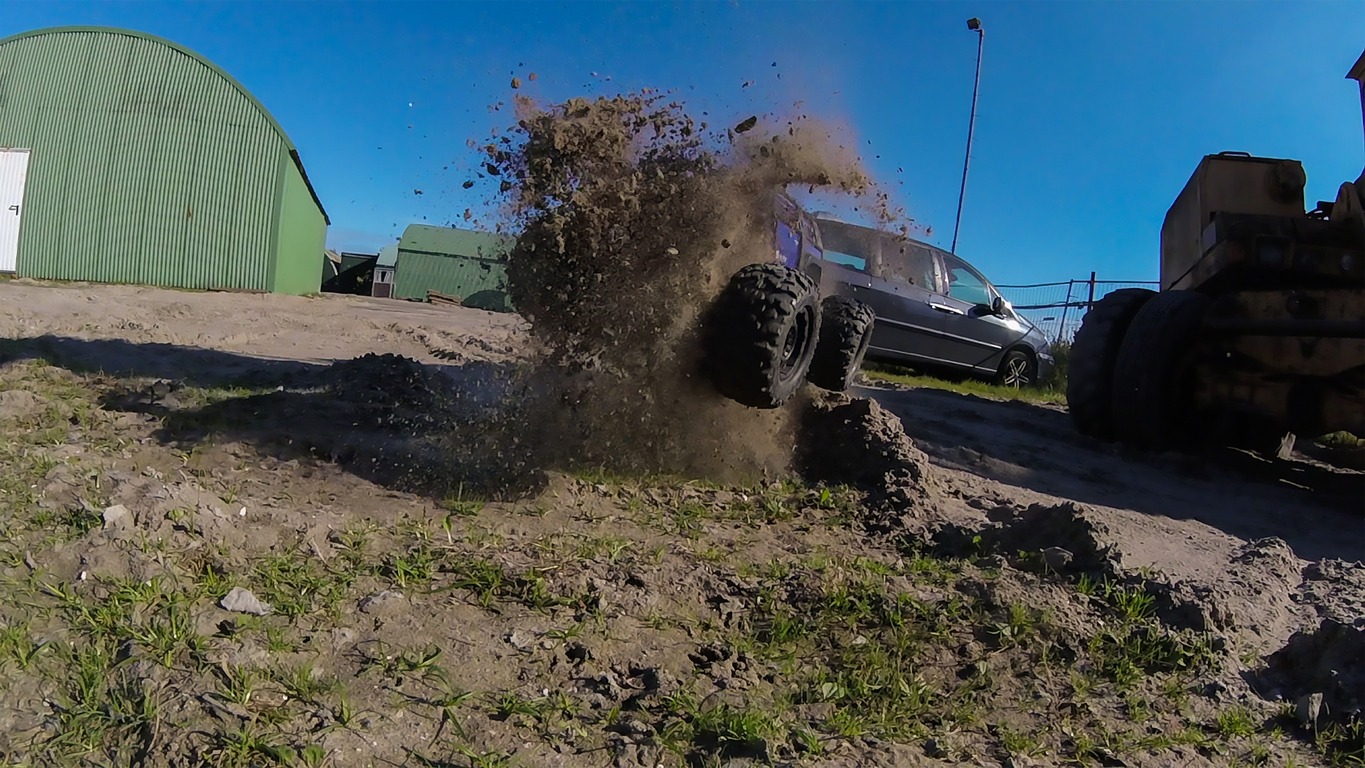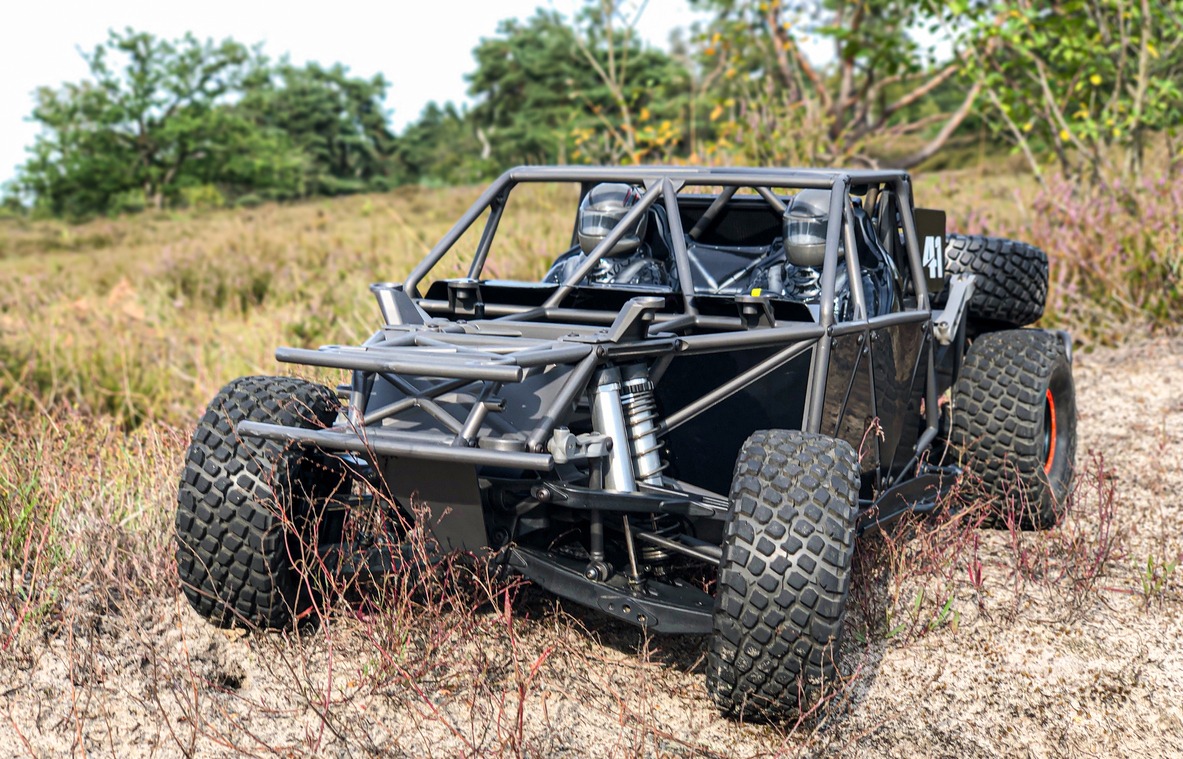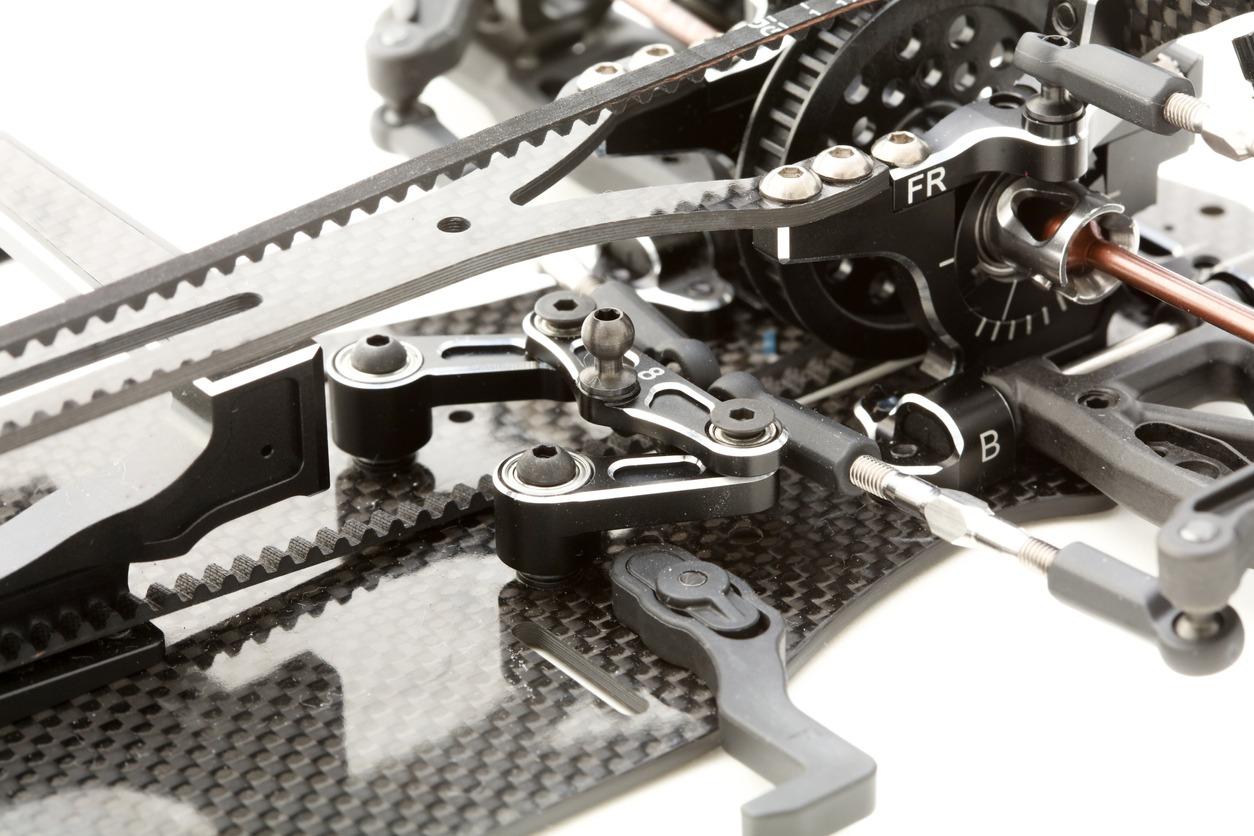Owning and driving a (RC) Remote Controlled car is a fun activity that is guaranteed to capture everyone’s attention. The best thing about the hobby is that you can take a car almost anywhere, whether you are on a road trip, visiting a friend or just by yourself. You can simply buy a ready-to-run car or get involved as much as you like in customization and DIY projects.
The hobby also provides a great opportunity to have a quality time with family and friends. But that’s not what this hobby is all about. You also get a chance to practically learn about how different things work, including electronics, motors, shock absorbers and drive trains.
RC cars are fun, especially for those who love cars and like tinkering with stuff. However, it’s an expensive hobby and there are quite a few things involved in buying your first RC car. Investing in RC cars is similar to investing in a real car, just at a smaller scale.
Just like purchasing a real car requires considering your personal requirements, design preferences and budget, buying an RC car also requires similar considerations. Considering these factors becomes even more important if you are buying an RC car for the first time.
The purpose of this guide is to educate beginners looking to buy their first RC car. To achieve this goal, we’ll try to keep things as simple as possible without going too deep into technical details of how RC cars work. Instead, the focus will be on some of the most important things that can help beginners make a more informed purchase decision.
A Little Bit About the Hobby
Many people believe that RC cars are just toy cars that you can bash against the wall in your living room or basement, but there is a lot more to RC cars. The two main aspects of RC cars as a hobby are racing and the technical side. Some hobbyists find joy in racing, while others are more into the technical side of things and spend most of their time building, customizing, fine-tuning and decorating their cars.
In both cases, RC cars as a hobby give you an opportunity to get outside and have a good time with friends instead of playing video games and spending most of your time glued to a screen. A couple of hours with a RC car are enough to free you from the stress of daily routine and make you a kid again. It’s a much more rewarding experience than playing video games and the feeling of opening the throttle and watching an RC car shoot is simply awesome. Some other benefits associated with the hobby include:
- You get time to get outside and have some fresh air
- You get a chance to build friendships with like-minded people and be more socially active
- Unlike virtual characters in video games, you own a physical object you need to take care of and maintain
- You get to improve your hand-eye movement and coordination in the real world
- You compete against others and can feel your heart race when blasting 70 mph
- It’s fun and a satisfying activity that also makes you more responsible and careful
- Improves imagination and gives you a chance to get creative
In a Hurry?
Many hobbyists just want to get started right away and learn with experiences. For them, the easiest way of picking an RC car is to set aside a budget and buy one that suits their wallet. It’s always recommended to go for RC cars from reputable brands and avoid no-name cheap brands that don’t stand behind their products. It’s better to spend some extra money instead of buying a cheap toy that breaks down in five minutes after buzzing around a bit. By price, RC cars can be broadly categorized into three main categories (excluding toy or mini RC cars).
Entry-level RC Cars
Prices for entry level RC cars start from around $70 and can go all the way up to $250. Entry-level RC cars are not junk and offer quite a bit for the money. The main difference between these and more expensive cars is that you cannot expect flagship-level components at this price point. Some manufacturers offer better upgradability with high-performance parts, allowing you to upgrade your entry-level RC car into something better. Most entry-level RC cars are made using plastic parts and share some common features including:
- A 2.4 GHz wireless controller
- 2-wheel drive train
- Brushed motor
- NiMH battery
- A basic charger
- Ready-to-run
Mid-range RC Cars
A mid-range RC car costs between $300 to $500, which is quite a lot of money so you can expect better hardware than entry-level cars. Although you get better a controller, motor and in general build quality, many mid-range cars don’t come with a battery and charger, so you might have to spend some extra cash on these. Those who already have some experience with an entry-level RC car can feel the performance difference a hundred dollars more can make. The main differences between entry-level and mid-range cars include:
- A brushless motor instead of a brushed motor (more on differences between the two later)
- High-performance ESC (Electronic Speed Controller) that enables you to use LiPo (Lithium Polymer) batteries
- A mix of metal and plastic parts instead of just plastic
- Some brands might also include charger and batteries in the package. But they usually leave it to buyer to purchase these according to their own requirements
High-end/Hobby Grade RC Cars
Things can get really expensive from here. Prices for hobby grade RC cars start from $500 and can reach even thousands of dollars. Because of the costs involved, these are recommended for those who already have some experience with RC cars and can build and maintain one themselves. These usually come as barebone kits.
Hobbyists buy other components themselves to make their own build according to their unique requirements, which requires a deep understanding of how different parts work and compatibility between them. Some key differences between high-end and mid-range RC cars include:
- Usually come with a 4-wheel drive train instead of 2-wheel DT
- Adjustable shocks
- More metal parts and fewer plastic parts
- Sturdier chassis usually made of aluminum and possibly carbon fiber, some even use titanium
- More customizable and upgradable
- Use of strong and lightweight materials like carbon fiber offers better weight to strength ratio
- Better performance
- Longer runtimes
- More durable
Which One to Buy?
Although an entry-level RC car looks like the best option for beginners, mid-range cars are arguably better because it does not take a lot of time to make you feel you need something better. It’s easier to upgrade mid-range cars and most parts can be easily changed when required. Since this guide focuses on beginners, we cannot advise you to spend hundreds of dollars on a high-end car right away. It’s better to get familiar with RC cars to see if the hobby is for you before making a bigger investment.
Types of RC Cars
RC cars come in different shapes and sizes and are built for specific terrains. By terrain, RC cars can be divided into two main categories i.e. on-road and off-road RC cars. The primary focus of on-road cars is speed, while off-road cars are built to handle tough terrains. Knowing how and where you want to drive an RC car makes it easier to pick the right one.
On-Road RC Cars
These cars are made for speed and require smooth surfaces to work efficiently, and are not meant for the backyard. Featuring a sleek body, on-road or on-track RC cars remain stable at high speeds because of their low chassis and a short travel of shocks. High stability and predictable braking make these suitable for high speed racing on carpeted tracks. On-road cars can handle minor bumps and some clay (usually up to an inch of ground clearance), but anything above this can damage the car.
These cars are a suitable option for hobbyists looking for an RC car to drive in large paved areas such as empty parking lots and want speed, acceleration and better handling. These are also for hobbyists who want a car or truck that looks like a real one (scaled down versions of real cars). Despite their speed advantage, on-road cars are usually not the best option for most beginners. You need some experience and cemented areas or asphalt surfaces large enough to drive an on-road to its fullest potential.
Off-road RC Cars and Trucks
Although off-road RC trucks can run on almost any terrain, their specialty is rough terrains. RC trucks lack the speed and stability on-road cars offer on smooth surfaces. The driver needs to be careful when driving these on paved roads as they can flip over at high speeds, especially when cornering.
Off-road cars make more sense for most beginners who want to drive one in a local park, in their backyard or in the alley. Large rubber tires, higher ground clearance and shocks with long travel allow you to drive an off-road car on almost any surface.
Examples of some popular on-road RC cars.
Types of RC Vehicles by Design
The term RC cars is often used interchangeably for different types of RC vehicles, which can be classified into three main categories by design.
RC Cars
RC cars are built for speed and stability on paved roads with a top speed of around 70 mph. Some high-end/customized RC cars can even reach speeds double of up to 100mph. RC cars can further be subdivided into more categories including:
Drift RC cars: slick tires, better at sliding around turns, almost as fast as normal on-road cars with better cornering abilities, not suitable for beginners as drifting is an art that takes time to master
Although a Drift RC car might not be the perfect option for all beginners, there are some affordable drift RC cars that beginners might want to consider including Exceed DriftStar.
On-road RC cars: Also known as street cars, many of these are a scaled-down replica of a real car, for flat paved surfaces, can break easily on rough terrains.
Traxxas Ford Fiesta ST Rally is a good example of a 1:10 replica rally RC car featuring a 4WD drive and officially licensed from Ford. If you have a bit more to spend, HPI Racing 120102 can be a good option for those wo want an RC inspired by Ford Mustang, while Beginners on a tight budget might find TAMIYA 1999 Subaru Impreza Monte-Carlo a convincing option.
Touring and Rally RC cars: These cars are purpose-built for rallies and are essentially a lighter, stronger version of on-road cars designed to go faster. In the RC cars category, Rally cars are a good option for beginners because they are easier to handle, durable and easier to clean and maintain.
Team Associated DR10 2WD and Team Associated DR10 2WD are among the most popular drag racing cars and feature a similar design at different price points.
RC Trucks
RC trucks are bigger and meaner machines made to conquer rough terrains and can be broadly categorized into stadium and monster trucks. Stadium trucks are usually electric, having a 2-wheels drive. They are used for indoor racing and can also do some off-road. Monster trucks are heavy-duty and durable machines for off roading and can take some serious abuse before breaking down. Monster trucks have a higher ground clearance and bigger shocks for off-roading, making them a perfect choice for backyard driving.
Traxxas Stampede (2WD) and is one of the most popular and top selling monster trucks followed by more affordable Exceed RC Rally Truck. Other costlier, but more feature packed options include Team Associated Rival MT10 4WD, ARRMA Granite (4WD) and ARRMA Big Rock (4WD). Some noteworthy stadium/short course RC trucks include Team Associated Pro4 SC10, HPI Racing – Jumpshot and ARRMA SENTON. TAMIYA Blackfoot is a relatively more affordable option for those who love the outdoors and want a decent off-road RC truck. If you are specifically looking for a stadium racing truck, TEAM LOSI TLR03015 is one of the most popular mid-range options.
RC Rock Crawlers are like a version of RC monster trucks and as the name suggests, can crawl on rocks and other rough terrains e.g. Traxxas TRX-4. However, they cannot move at a fast pace because these are designed for a different purpose i.e. to move slowly on terrains where no other type of RC vehicle can move without breaking something. Short Course RC trucks are scaled-down versions of real racing trucks and can reach speeds up to 60 miles/hr.
RC Buggies and Thruggies
RC buggies are like the middle ground between RC cars and RC trucks. These are suitable for hobbyists who are either not sure which type to get or want both on-road and off-road capabilities. These RC vehicles are a great option for beginners since they can drive them on tarmac roads as well as grass, gravel and other loose surfaces.
RC Buggies are second to on-road cars when it comes to speed, but slower than RC trucks on off-road tracks because of a lower wheelbase. Owning an RC buggy means you get decent on-road performance while still being able to drive it on rougher terrains where it’s risky to drive an on-road car. These fast, yet nimble machines don’t disappoint, especially when it comes to hobbyists new to the hobby because they can be driven on most surfaces without compromising too much on both speed and off-road performance.
RC truggies are similar to buggies with a more focus on off-road performance. It’s essentially a combination of monster truck tires with a buggy’s frame. They are slower than both RC cars and buggies on paved roads and faster than buggies off-road. A longer driveshaft, larger tires, exposed shocks and a sleek look are key characteristics of a truggy, which is a better choice for hobbyists who want more off-road capabilities.
Traxxas Bandit is one of the most popular and a competitively priced 2WD buggy that can go up to 35mph. Other entry-level models include Exceed RC Brushless PRO, TAMIYA Grasshopper and TAMIYA Racing Fighter. ARRMA Typhon falls somewhere in the mid-range category, while TEAM LOSI DC Elite is a costlier alternative for those who are more into off-roading.
Ready-to-run vs. DIY/Kit RC Cars
Since this guide focuses on beginners, we won’t get into too much detail about DIY or build-it-yourself cars. Ready-to-run cars work great for people who don’t want to spend a lot of time on learning how RC cars work and are excited to unbox a car that just works out-of-the-box.
Ready-to-run RC cars are pre-assembled and there is very little to nothing you need to do to get started. However, you need to make sure that the package contains everything and you don’t have to buy anything (some might not come with a battery or charger). Cars labeled as Almost Ready-to-Run RC vehicles might require you to do some paint work or install a battery pack before using. You still need to follow the instructions to use a ready-to-go car, including how to charge it, limitations and where and how to drive.
DIY or built-it-yourself cars means getting deep into the mechanics of how RC cars work. The DIY hobby requires patience and has a steep learning curve. Most of the components needed to run a car are included in the core DIY kit, but you still need to find and install other compatible parts yourself. Building one yourself can be a rewarding experience and gives you a sense of creating something. You can customize it to your heart’s desire, but it also requires good know-how of the trade and can be too much to handle for beginners.
Ready-to-run RC cars are less pricey and make it easier for beginners to enter the world of RC vehicles. DIY kits attract those who like to tinker with things and want something more customizable. These kits enable you to customize and upgrade to parts of your choice. In context of price, ready-to-run RC cars are a more suitable option for beginners who are just getting into the hobby.
Things to Consider When Buying Your First RC Car
The RC car hobby can get pretty complex and technical, but there are a few basic things beginners need to consider to get the most value for their money. Price is often the determining factor for most beginners, so let’s start with that.
Price
There are plenty of entry-level RC cars that serve the purpose well when it comes to buying your first RC car. However, if your budget allows, it’s better to go for a mid-range RC car. That might cost you around a hundred dollars more, but you don’t have to start thinking about upgrading within a week or so. Then comes mini or micro RC cars that cost around $50, are ready-to-run and measure around 2.5 inches in length. These RC cars only make sense if you are not yet ready for a ‘proper’ RC car and just want to see what all the RC cars fuss is about.
The general rule of thumb is that cheaply priced RC cars are not high quality, but you also don’t need to spend hundreds of dollars for high-end cars when starting out. There are plenty of reasonably priced cars from reputable manufacturers that offer great bang for the buck. Going for the cheapest option can actually cost you more in the long run because of broken parts.
An-entry level RC car won’t break any speed records, but it also won’t cost you a fortune and can be had for around $100 ($70-$250). Mid-range RC cars from reputable brands cost between $300 to $500. From there, costs only get higher and some high-end models can reach prices in thousands of dollars.
In the beginning, expect to spend around $200 for a quality RC car that can take a fair amount of beating before giving up. Cheap cars might cost less in the beginning, but they tend to break easily and are usually irreparable when that happens, and won’t last as long as more expensive ones.
Why are RC Cars so Expensive?
High prices of RC cars is perhaps one of the biggest con of getting into this hobby. RC cars are not usual toys and have a lot of moving parts. The body and core components need to be durable and made of high-quality materials, which are not cheap and make the manufacturing costs high. Manufacturers try to make their RC cars as durable and lightweight as possible, which requires R&D and use of exotic materials such as carbon fiber and titanium.
RC car toys are not a reasonable option for hobbyists because they break easily and don’t offer good value for the money. For that reason, they have to spend a bit more even to enter into the hobby. Like most other hobbies, the RC cars hobby is also expensive and hobbyists need to be ready to spend a decent amount of money on it.
Buying New vs. Used
Buying a used RC car itself is not a bad idea and you can save quite a bit of money doing so. But it’s for those who really know what they are doing. More often than not used RC cars on Craigslist have lived their life and the owner is simply trying to offload what isn’t working for them anymore. Someone with very little knowledge about the hobby can easily get scammed, which makes buying a used item an option suitable only for experienced hobbyists.
In case you might get lucky with a used RC car, you still probably won’t have any warranty to cover your purchase. Buying one new obviously costs more, but it gives you a more enjoyable experience and does not make you feel you just threw your hard-earned money away. What might have been a flagship product five years ago is probably obsolete now and won’t give you an enjoyable experience. Any machine with moving parts has a finite life and it’s hard to determine how much is left in it.
Power Source: Electric vs Nitro
RC cars need power to run, which can be electric or nitro. Electric power refers to use of batteries, while nitro refers to nitro or gasoline as a fuel. Some RC cars also use gasoline as a fuel, but these are usually bigger RC cars 1:5 in scale and burn gasoline like regular cars. High-end RC cars featuring jet-turbine engines are usually powered by diesel. When it comes to buying an RC car for the first time, you only have to choose between electric and nitro-powered cars.
Electric cars are cheaper, require little to no maintenance and run quiet, but on the other side they have limited run times and require you to wait for hours to recharge. Nitro-powered cars have longer run times, make nice sounds and you don’t need to wait for hours to recharge a battery. But these are expensive and complex machines that require regular maintenance. You also have to keep buying nitro fuel cans, which can leave a nasty smell, while the sound may also disturb your neighbors or people around you.
Battery-powered RC cars cost less than their nitro counterparts, are easily upgradable and accelerate/run faster (same price point cars). That’s why electric-powered cars are the first choice of beginners as you can simply recharge a battery, which is less costly in the long run than burning nitro fuel cans. Nitro-powered cars also require more maintenance and tuning as they have more moving parts. Nitro cars are expensive to buy, run and maintain and it’s like owning a real car, just at a smaller scale.
Nitro RC cars have a break-in period during which you have to run the car slowly. Another issue associated with Nitro cars is gas leakages/spills, but those who love the smell and noise of nitro-powered RC cars don’t care much about these issues.
- Electric RC cars are cheaper, run quieter and faster, and don’t require refueling and maintenance
- Nitro-powered RC cars are noisy, heavier and require refueling and regular maintenance
- Nitro RC cars provide a realistic driving experience because of smell and sound and are can tolerate wet conditions (electric cars are not always waterproof)
- Nitro cars can only be used outdoors because of exhaust fumes and smell due to burning fuel
Electric Motors: Brushed vs. Brushless
Since most beginners are into buying electric RC cars, understanding the two different types of motors and their advantages/disadvantages is important when making a purchase decision. The type of motor you choose can have a significant impact on the price.
The two types of motors used in electric RC cars are brushed and brushless, each having its own Electronic Speed Controller. ESC enables you to control speed otherwise, the motor either does nothing or goes full throttle.
Although cheaper, RC cars powered by brushed motors lack power and are inefficient. Brushless motors on the other hand are powerful, a lot more efficient than brushed motors and last a long time. If your budget allows, it’s recommended to go for an RC car featuring a brushless motor. You can also change the motor in future, but it can be difficult for people new to the hobby as you also need to upgrade the ESC and a programming card.
Batteries
All electric cars are powered by a battery. Although NiMH and Alkaline batteries are also used in some RC cars, for the most part there are two types of batteries to choose from i.e. LiPo and NiMH. Lithium Polymer batteries are more expensive and recommended if you can make the investment.
LiPo batteries offer more power, longer run times and have a longer life than NiMH batteries. Their disadvantages include cost and that they can explode if stored, charged or used incorrectly (not common but can happen). Capacity of both batteries is represented in mAh, which refers to the amount of charge a battery can hold.
LiPo batteries also have another number ‘c’, which refers to how fast they are able to deliver power to the motor. Although there is a risk of LiPo batteries exploding if handled incorrectly, it happens rarely as there are safety checks in place to minimize chances of such incidents happening. The only real advantage of NiMH batteries over LiPo batteries is the cost advantage.
Batteries of entry-level RC cars tend to last between 5-10 minutes, which can be even less if you always run your car on full throttle. Mini RC cars are usually powered by Alkaline batteries (AA/AAA), while some entry-level RC cars are powered by Ni-Cd batteries, which self-discharge slowly and can be safely fully discharged before recharging.
Parts and Future Upgrades
The parts of RC cars are also expensive like the cars themselves. You have to replace or upgrade some parts with the passage of time as part of maintenance to keep your car in good shape. The cost of running and maintaining a nitro-powered aka glow RC car is even higher. Regular maintenance is not such an issue with electric cars, but you still need to consider costs involved in upgrading and changing parts such as batteries and tires. Possible future expenses beginners need to keep in mind while setting a budget include:
- Tires (wear out pretty quickly, better to buy an extra set along with a new RC car)
- Batteries (lose the ability to hold charge over time, need replacement when they can no longer hold a charge)
- Body work (dents and marks are common)
- Speed controls (the Electronic Speed Control is also replaced when upgrading from a brushed to a brushless motor)
- Spur gears
- Radio system
- Speed controls
- Servos
- Glow plugs (Nitro RC cars)
- Pinions
4WDs vs. 2WDs
The difference between a 4-wheel drive and 2-wheel drive RC is the same as between regular cars. 2WD RC cars move on two wheels while 4WDs move on all four wheels. 2WDs are cheaper and simpler, while 4WDs are expensive, more suitable for off-roading and provide better control. 2WD RC cars are affordable, last longer, have less parts to maintain and are made for smooth tracks, but are slightly more difficult to drive than 4WDs. 4WD RC cars are expensive, but a better choice if you want more control and plan on driving in rough terrains.
Scale
Scale of RC cars refers to the measuring system based on which an RC car is compared against a regular full-size car e.g. a 1:10 scale RC car is 1/10th the size of a real car. The most common scales are 1:6, 1:8 and 1:10 with 1:10 being the most common of these because of its spare parts availability and portability.
Mini RC cars are usually 1:28 or 1:64. Scales are comparative e.g. a 1:10 RC truck will be bigger than a 1:10 on-road RC car because trucks themselves are bigger than cars. Excluding mini RCs, 1:16 is the smallest and 1:5 the largest scale for RC cars.
1:10 scale is considered to be the ‘regular’ RC size and recommended for most beginners because it’s easier to find spare parts for this scale and there are a lot of customization and upgrade options available. 1:10 are also not too big to carry and are usually between 17 to 22 inches long. The scale is there to give you an idea of what size to expect. The actual size of an RC car can even vary between cars from the same category and from one manufacturer to another.
How Much Space Do You Have?
Picking the right RC car also depends on how much space is available and the terrain you want to drive on. You need plenty of open space away from traffic to run RC cars and trucks as they can reach speeds of up to 60 miles/hr. A rock crawler does not require a lot of space and can be driven on almost any surface. Off-road RC vehicles are your only option if you don’t have free paved surfaces where you can drive an on-road RC car.
Speed and Acceleration
Beginner’s focus should be on stability and durability rather than just top speed when buying their first RC car as they might not be able to control a car that runs too fast. Cars that are easy to handle make more sense for beginners since they are just entering the game and it takes time to master it. 4WDs provide better control and traction and also reach decent speeds, making them a better option for first-time buyers.
High-end RC cars can reach speeds of up to 70 mph, while some modified versions can even clock around 100 mph. Speeds of up to 25 mph are suitable for beginners otherwise they might have trouble in controlling a car that runs or accelerates too fast.
Weight and Size
Weight of a car plays an important role in how much speed and acceleration it can have. Heavier cars tend to be more durable and long-lasting, but these also move slower and have lesser top speed. A heavier and bigger car is also difficult to move around and you might not be able to take them everywhere. The exact weight of a car varies from one product to another. For reference, following are common weights and sizes of for different scales:
Scale | 1:28 | 1:16 | 1:12 | 1:10 | 1:8 | 1:5 |
Weight | 1-2 lbs. | 5-10 lbs. | 2.5-3.5 lbs. | 3-11 lbs. | 5-10 lbs. | 60-80 lbs. |
Length | 3-7 inches | 10-15 inches | 14-16 inches | 17-22 inches | 18-24 inches | 36-40 inches |
Width | 3-4 inches | 7-8 inches | 3-7 inches | 8-14 inches | 10-17 inches | 28-32 inches |
Height | 5 inches | 5 inches | 2.5-4 inches | 4-10 inches | 4-11 inches | 16-24 inches |
Design, Body Materials
Plastic and metal make up most of the parts of an RC car and how much one of the two is used determines the overall price. High-end RC vehicles might use exotic materials such as carbon fiber and titanium, but we won’t go into details about these since our focus is on beginners. RC cars that have more metal than plastic are long-lasting, expensive and heavier because of which they usually run slower.
Plastic RC cars are a lot cheaper, but might not last for a very long time. These are also lightweight and move faster, which might make control difficult for beginners. All plastic is not equal and there are some high-end RC cars too made mostly of plastic. However, the purpose of these cars is to minimize weight to achieve higher speeds for racing/rallying.
Going Shopping for the First Time
Folks at hobby shops are usually kind people, willing to offer any help you need. Don’t be shy to pay them a visit and get familiar with things. If things seem too technical or complex to grasp, give it some time and do some homework online. Understand your own requirements and design preferences before committing to anything.
Another advantage of visiting a local store is that you get a chance to test-drive an RC car before actually buying it. Although online reviews are a great source of information when buying an RC car for the first time, nothing equals test-driving one and having the in-hand feel of a car. When you get an idea of how a particular car or category of cars feels and looks, it’s up to you to buy it in-store or online.
Popular RC Car Brands
Cheaply made RC cars can break easily, so beginners should try to stick with reputable brands. Some of the most well-known RC car brands include (excluding brands that exclusively make high-end RC cars):
Traxxas
Traxxas offers a wide range of RC cars and trucks and is among the pioneers in ready-to-run RC cars. Their cars rarely brake so you won’t be spending a lot of money on spare parts down the line. Some of their most popular 1/10 electric models include Traxxas Bandit, Traxxas Stampede and Ford Fiesta ST Rally Race Car.
Team Associated
The company is known for its high-quality and durable products that are also used in world championships. The company is better known for its kit cars and requires some understanding of the parts, making it more suitable for hobbyists who are looking for a DIY kit. Its products come with great customer support and some of the most popular models include Team Associated Pro4 SC10 (4WD), Team Associated Rival MT10 (4WD), Team Associated DR10 (2WD) and Team Associated DR10 (2WD).
HPI Racing
HPI Racing is known for its unique designs and making recreations/high quality replicas of real cars and nitro cars. Among its lineup of 1:10 RC vehicles include HPI Racing Jumpshot and HPI Racing 120102 RS4.
Team Losi
If you are looking for highly customizable RC cars with readily available parts in RC car stores, Team Losi products are an excellent option. It is popular for its 1/8 scale cars and kits. Although prices are a bit higher than the competition, you also get a higher value for your money in return. Popular Team Losi RC cars kit models include Team Losi Elite Race Kit and Team Losi Stadium Race RC Truck Kit TLR03015.
Exceed
Exceed offers the most affordable options, which makes it a good option for beginners on a tight budget. The brand is recommended for hobbyists who don’t feel like being fully committed to the hobby yet but still want to give it a try. Its RC cars and trucks lineup includes Exceed RC Electric DriftStar, Exceed RC Off-road Rally Truck and Exceed RC Brushless PRO Off Road Buggy.
Tamiya
The brand is known for its classic designs, value for money and offers competitively priced products. This brand is a good option if you are looking for retro kits or non-competition grade cars at a relatively affordable price. Another advantage of buying a Tamiya RC car is the availability of spare parts, which are available in most hobby shops as well as online. Some of its 1:10 models include Tamiya Grasshopper Off-road, Tamiya Racing Fighter Buggy, Tamiya Subaru Impreza Monte-Carlo kit (4WD) and Tamiya Blackfoot RC Truck.
ARRMA
ARRMA is one of the most recognized brands in the US and offers a wide range of RC vehicles. It offers great value for money, durable RC vehicles and excellent spare parts availability, making it one of the best options for beginners. Its products are relatively more expensive, but they make up for that extra cost with durability and longevity. From competition-ready RC vehicles to beginner-friendly cars, ARRMA has got something for everyone. Some of its popular 1/10 models include ARRMA Granite Monster Truck, ARRMA Typhon MEGA, ARRMA 3S Monster Truck and ARRMA Senton Mega.
Conclusion
The important considerations when buying your first RC car include how much money you are willing to spend, where you want to drive your RC car and how much time you are willing to put into the hobby. Ready-to-run buggies are a great option for beginners who want to jump right in without worrying too much about terrains and speed. On-road cars make more sense if you are into racing, while RC trucks are better off-road alternatives.
Regardless of the type of RC vehicle you plan on buying, sticking with a reputable brand can actually cost you less in the long run. Price of parts can sometimes exceed the price of an RC car, so it makes sense to invest in brands that you can easily and cost-effectively find parts for. You’ll need parts at some point in time. The faster you go, the harder you’ll crash, so the best bang for beginner’s money are ready-to-use 2WD RC cars powered by a brushless motor and a LiPo battery that can do 30-40 mph.

